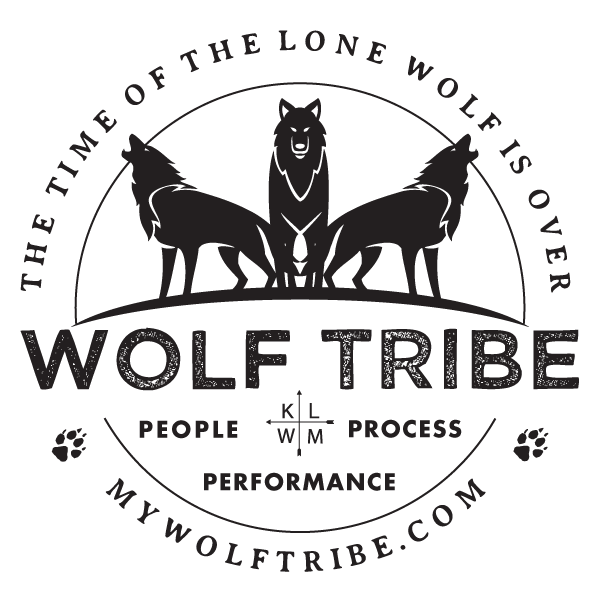Step 28 Up the Tribe Triangle: The Power of Accountability
“We are not afraid of failure as much as we are afraid of what success
will require from us.”
-Philip Folsom
Everything great will be hard. This axiom holds true for all your personal development journeys as well as the collective path of leading your tribe towards greatness. At some point there will be resistance from both you and your team.
If there is one magic tool in your leadership arsenal to sustainably overcome this inevitable resistance, it is accountability. Like everything else in this level of the Tribe Triangle, using that tool is very simple but very hard and you will get better at it with practice!
Willpower and brave intentions will not be enough to sustain you through adversity. Sooner or later, you will become tired, distracted and overwhelmed and you will revert back to whatever baseline of behavior that you and your team normally operate at. Leveling up your operating system from that baseline of habit to the new level of practice is the process of going from efficiency to growth and it will require a tremendous increase in energy. This heavy lift must be shared and that collective burden is called accountability.
Accountability is collective responsibility to a shared goal. It is the engine that connects intention and commitment to actual results.
Everything in the Healthy Conflict level of the Tribe Triangle is an immediate precursor to competitive greatness and excellence and none of it is free. In addition, every step in this stage of your culture development journey will be impossible to decree or mandate; it must be made and maintained by your previous work in the alignment and kinship phases.
Accountability is a byproduct of all the components of alignment and kinship. This is especially true in the following three categories which are all indispensable for implementing accountability in your tribe:
Commitment to a clear shared purpose or ‘why’.
Modeling clear transparency with goals and expectations.
Establishing clear communication and avoiding assumptions.
Without these early-stage culture norms, you will not be able to make or maintain accountability. This is especially true in this era of increasing remote work where people are experiencing more disengagement and disconnection from their organization’s shared culture.
The difference between accountability and shame or blame.
If you attempt to implement accountability in your team without first establishing the shared alignment and kinship functions of the Tribe Triangle, it will often look and feel like shame or blame. Both shame/blame and accountability deal with external feedback and increased pressure on process and results. This process is both powerful and dangerous.
If we have a shared mission and the safety of kinship, that feedback and pressure feels like support.
Without shared alignment and kinship, that increased pressure and feedback feels like shame and blame.
Implementing accountability without the crippling experience of shame or blame is the reason why accountability is only successfully in the Healthy Conflict level of your journey up the Tribe Triangle. There are several other vital factors to consider when implementing accountability.
Accountability involves responsibility and consequences. Consequences are powerful and should be a healthy component to any project. The natural world is filled with consequences which are usually immediate and non-negotiable. Now, we are often shielded from the consequences of our decisions by the artificial culture of comfort that we are born into. These artificial times require artificial means and establishing intentional consequences is a part of that. Again, we must be mindful of how our people are responding to these consequences and make sure they are driving engagement not eroding it.
One of the greatest leadership fears of establishing and implementing accountability as a leader is that we won’t be liked. Leaders are often not liked in the short term but it is vastly better to be respected and successful than liked. Heavy lies the crown and this is another reason that successful accountability only happens in the Healthy Conflict level of the Tribe Triangle.
There are three primary categories that accountability should be skillfully aimed at. Consider how you are leveraging your leadership to drive engagement, hit deadlines and celebrate success. These three categories are what everyone on the team should answer to and, like everything else, this is modeled by you first.
“Accountability is the measure of a leader’s height.”
-Jeffery Benjamin
Accountability to Purpose- This is the shared vision of your tribe. Accountability should always include this larger sense of duty to something that is aspirational and significant. When we set and honor goals, we must make sure they are connected back to the larger shared ‘why’ of the organization. In many ways, striving toward meaningful things carries its own accountability of honor, obligation and duty because it provides inherent meaning.
Accountability to Performance- Successful accountability must be focused on both results as well as progress and they are two very different things. Results are mission outcomes that ensures that the entire organization is moving forward toward our shared vision. Progress, on the other hand, is focused on effort that is based on shared values. Too much focus on results can lead to unethical behavior and cutting corners to achieve an outcome. Make sure that you are acknowledging and rewarding the struggle of moving forward in the face of adversity not just the results. Resiliency and character are also examples of performance.
Accountability to People- The most important form of accountability is the responsibility we have to each other. People are your most important resource and the behavior we model and enforce is central to our sustainable success. Accountability must acknowledge and drive behaviors that are in alignment to the shared values of your family or organization. People-based accountability should also involve honoring and enforcing transparency behavior, collaboration and the mode and cadence of communication on projects.
Click here To watch the video of Step 28: Power of Accountability
Leaders Must Write and Speak
Answer these questions in your journal by really writing them down. Discuss them with at least one of your most important people and really listen to their response.
Where are you seeing performance or people-based challenges in your family or organization? These will be visible by a lack of progress and results as well as a lack of engagement and morale.
What form of clarity and accountability can you implement to move those needles?
Ubuntu,
Philip Folsom







